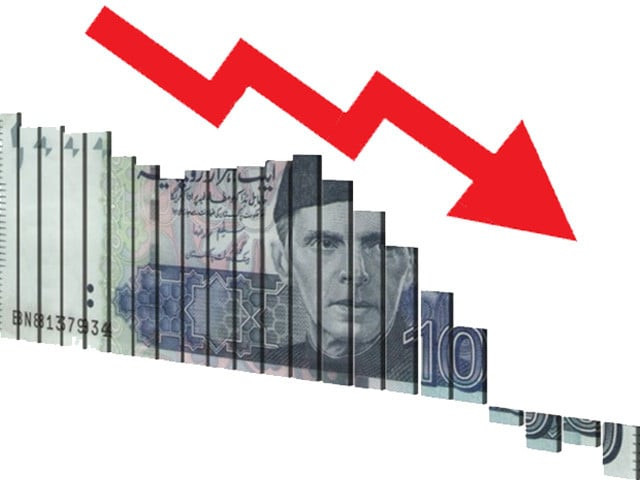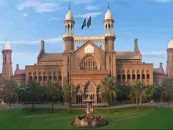Economy slows down to 1% in Q2
NAC says only farm sector does well with 5% growth

Pakistan’s economic growth rate has slowed down to just 1% in the second quarter of this fiscal year because of the poor performance of the industrial and services sectors, emphasising the negative impacts of the prolonged contraction policies that have also caused high unemployment.
Just two days before leaving her office, former caretaker finance minister Dr Shamshad Akhtar had boasted that the economic growth rate would be around 3% during the second quarter of the ongoing fiscal year on the back of a “stronger manufacturing output” -- a claim that was far from reality.
The only silver lining during this fiscal year is the agricultural sector, which is constantly showing growth amid the increased focus of the Special Investment Facilitation Council (SIFC).
The overall economic growth rate during the second quarter (October-December) of the current fiscal year remained at 1%, according to the National Accounts Committee (NAC).
The government body responsible for finalising the national accounts noted that the industrial sector contracted 0.84% during the second quarter against the same period a year ago -- contrary to Dr Akhtar’s assertion.
The services sector was almost flat at 0.01% growth.
However, the agricultural sector posted a growth rate of over 5% during the first quarter.
According to the SIFC Secretariat, the Green Corporate Livestock Initiative (GCLI) has inked a deal with a Brazilian company to import nine breeds of cattle from its country to enhance yield and productivity.
These breeds, including both local and Brazilian varieties, will improve Pakistan's livestock sector.
The consignment of 173 cattle arrived at Sialkot International Airport on Thursday, marking an important milestone in bilateral trade relations between Brazil and Pakistan.
The 108th meeting of the NAC held in Islamabad also revised upward the growth estimates for the first quarter of this fiscal year from 2.1% to 2.5%.
Planning Secretary Awais Manzur Sumra chaired the NAC huddle.
Pakistan’s population is increasing at a pace of 2.6% annually and any growth rate below this means that the country saw a surge in poverty, unemployment, and malnourishment.
For the current fiscal year, the government has set a 3.5% growth target but the International Monetary Fund (IMF) revised downwards its projection to 2% because of the prevailing financial crisis in the country.
Pakistan has been under the IMF programme for a long period and is implementing tight fiscal and monetary policies.
The growing inflation has also taken a heavy toll on the businesses as well as the people, limiting their ability to purchase goods.
The government has been suffocating industrial growth by placing curbs on imports that led to the shortage of raw materials and consequential closure of factories.
New Finance Minister Muhammad Aurangzeb said this week that the country could still grow under the IMF programme by focusing on the agricultural sector.
However, he added that it had become impossible to conduct business in the country with the interest rate standing at 22%.
The State Bank of Pakistan (SBP) has kept the interest rate unchanged at a record 22% in the hope of containing inflation but it failed to do so.
In the process, the central bank massively increased the cost of debt servicing for the government and contributed to the high unemployment in the country.
Agriculture
The second quarter economic growth rate is pulled up by the farm sector. This sector is estimated to have grown over 5% in the second quarter on the back of a healthy output in major crops; cotton and ginning, and livestock.
The NAC observed that there was a healthy growth in crops, particularly the important ones.
Major crops have shown a growth of 8.12% in the second quarter because of a significant increase in the final production of cotton, rice, and maize.
Wheat, which had no impact in the first quarter, has shown an increase of 6.7% in comparison with last year, having a positive impact on the estimates of the second one, according to the NAC.
Sugarcane has posted a negative growth of -10.7% during 2023-24 but its impact has been offset by the upsurge in the remaining four crops.
Other crops have shown a slightly negative growth of -0.31% because of a -0.72% decline in the production of green fodder.
However, cotton ginning and their miscellaneous components, which had a very high negative growth because of the low production in 2022-23, has now witnessed double digit growth of 53.6% because of a healthy production of the crop in 2023-24.
Livestock is at the same level, while forestry and fishing have also retained their normal growth.
Industry
The sector of industry in the second quarter has again posted a negative growth.
There was a negative growth of -4.17% in the mining and quarrying industry because of the decrease in the production of gas (- 5%), marble (-40.13%, and limestone (-20%).
Large-scale manufacturing witnessed a nominal growth of 0.5% during the second quarter.
Small scale and slaughtering have witnessed a growth of 10.4%. Electricity, gas and water supply industry has shown a positive growth of 1.54% because of the increase in the output of independent power producers (IPPs) as well as hydropower and nuclear plants.
The construction industry contracted 17.6% in the second quarter because of a decline in the production of cement, iron and steel.
Services
According to the NAC, the services sector has shown a nominal growth of 0.01% in the second quarter of this fiscal year.
An analysis of the sector reflects a mixed trend.
Wholesale and retail trade has witnessed a growth of 2.1% because of a positive growth in the agricultural output and large-scale manufacturing.
Although there was a decline in imports, the negative impact was offset because of an increase in the output of agricultural and large-scale manufacturing.
Transport and storage increased by 1.1% because of the increase in the output of railways as well as road network.
High inflation has been the real cause of decline in growth for the sectors compiled on current prices and then deflated to constant rates, according to the NAC.
Information and communication is one of those sectors, which have been affected by the rising inflation.
The finance and insurance sector declined by -11%.
Public administration and social security, which is commonly termed as general government, has declined by -16.2% because of high deflators against the same period last year.
The growth in the education sector slumped by nearly 1% in the second quarter. The NAC stated that the decline was because of an increase in deflators
Similarly, the human health and social work sector posted a decline of-2.5% because of an increase in deflators.
Other private services have been estimated at 3.63% on the basis of the indicators received from sources.


















COMMENTS
Comments are moderated and generally will be posted if they are on-topic and not abusive.
For more information, please see our Comments FAQ